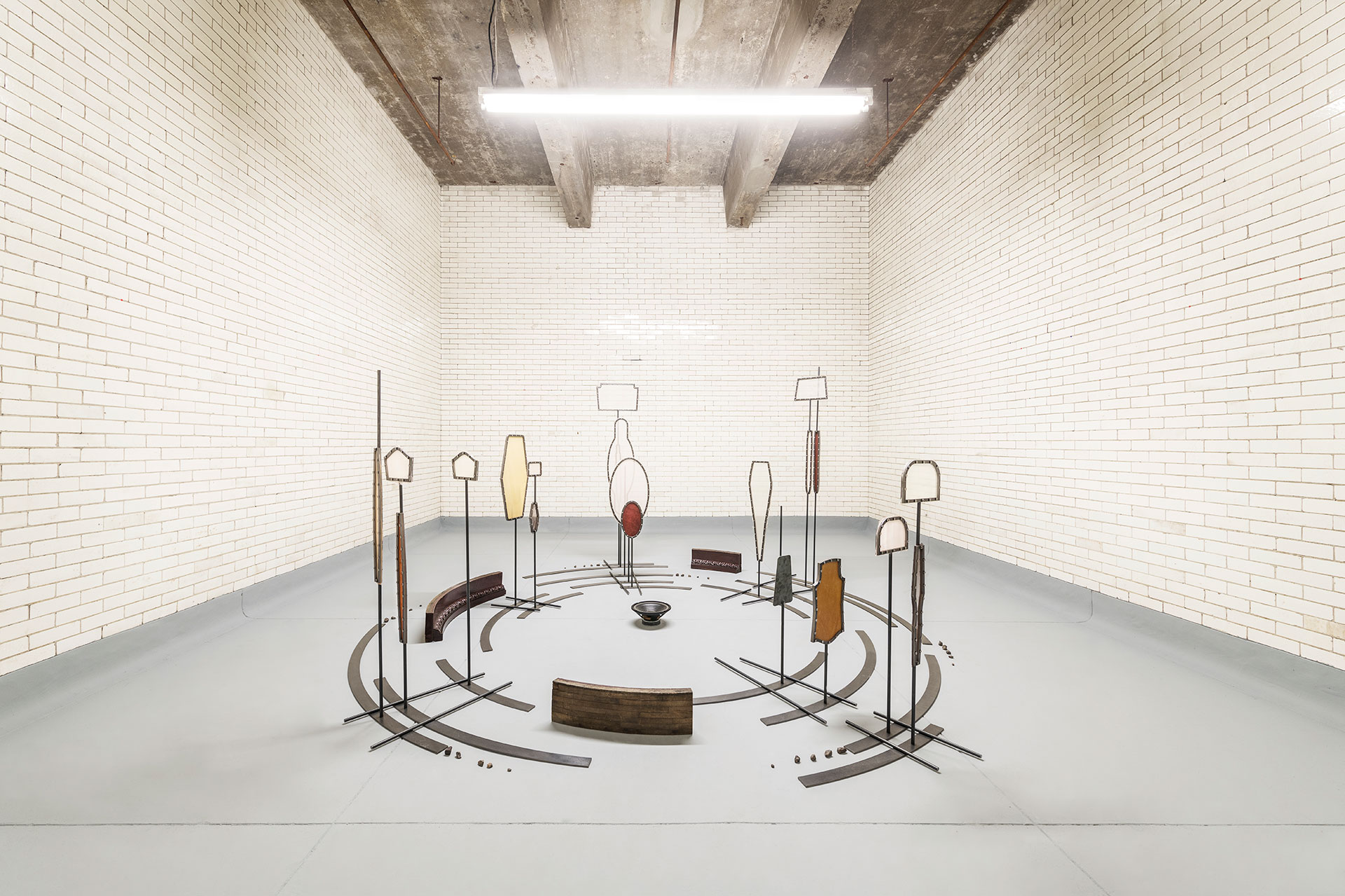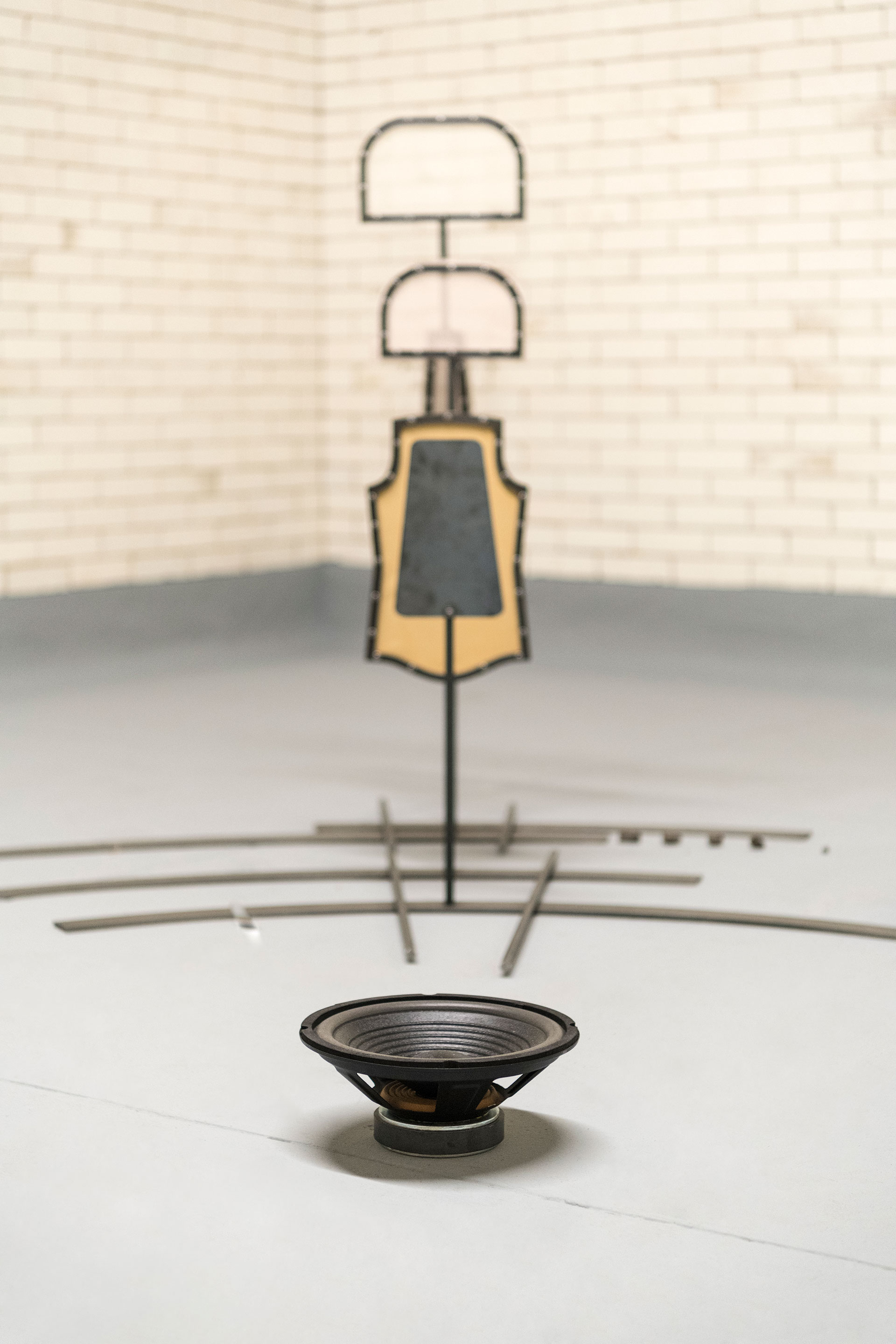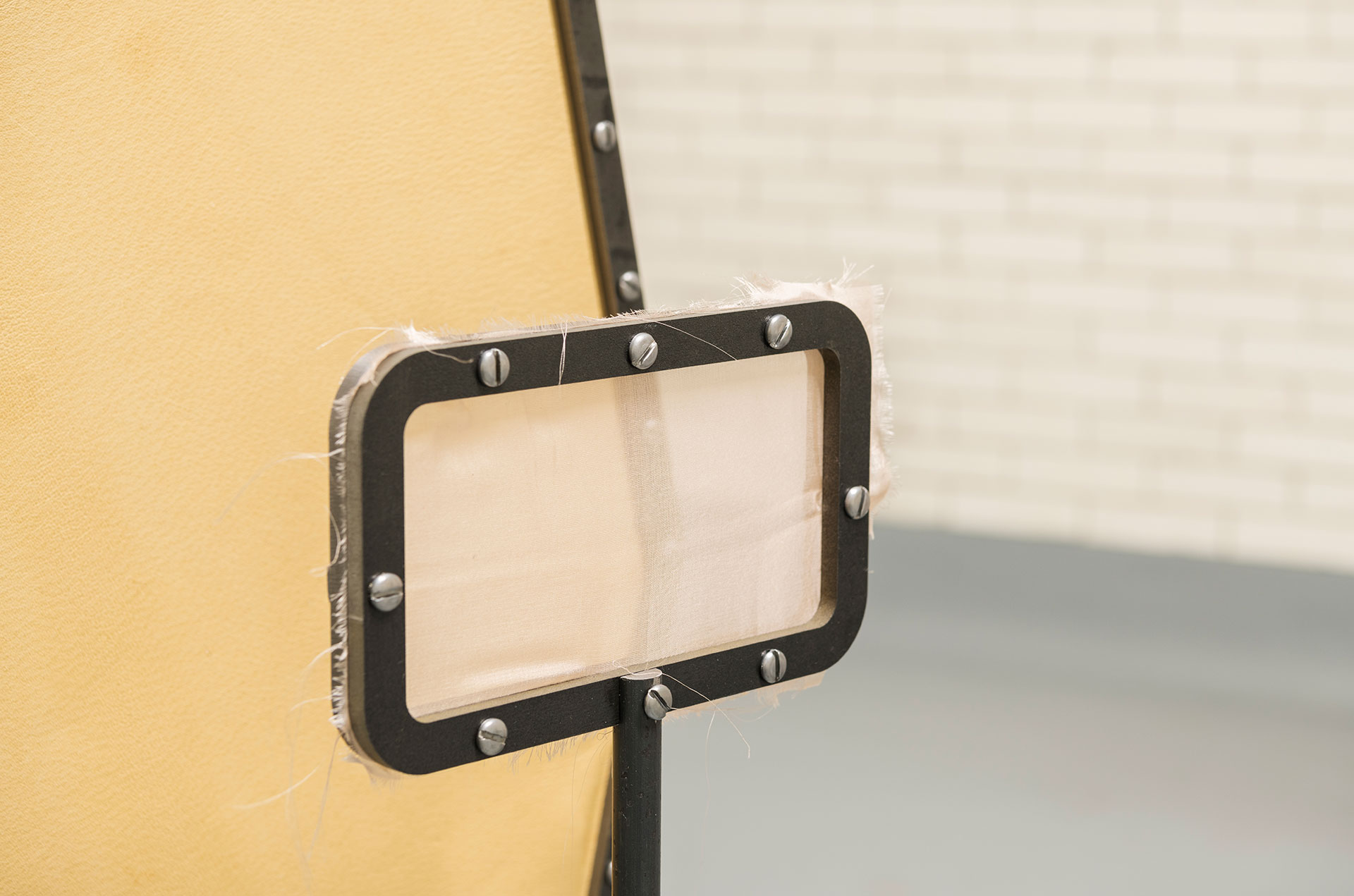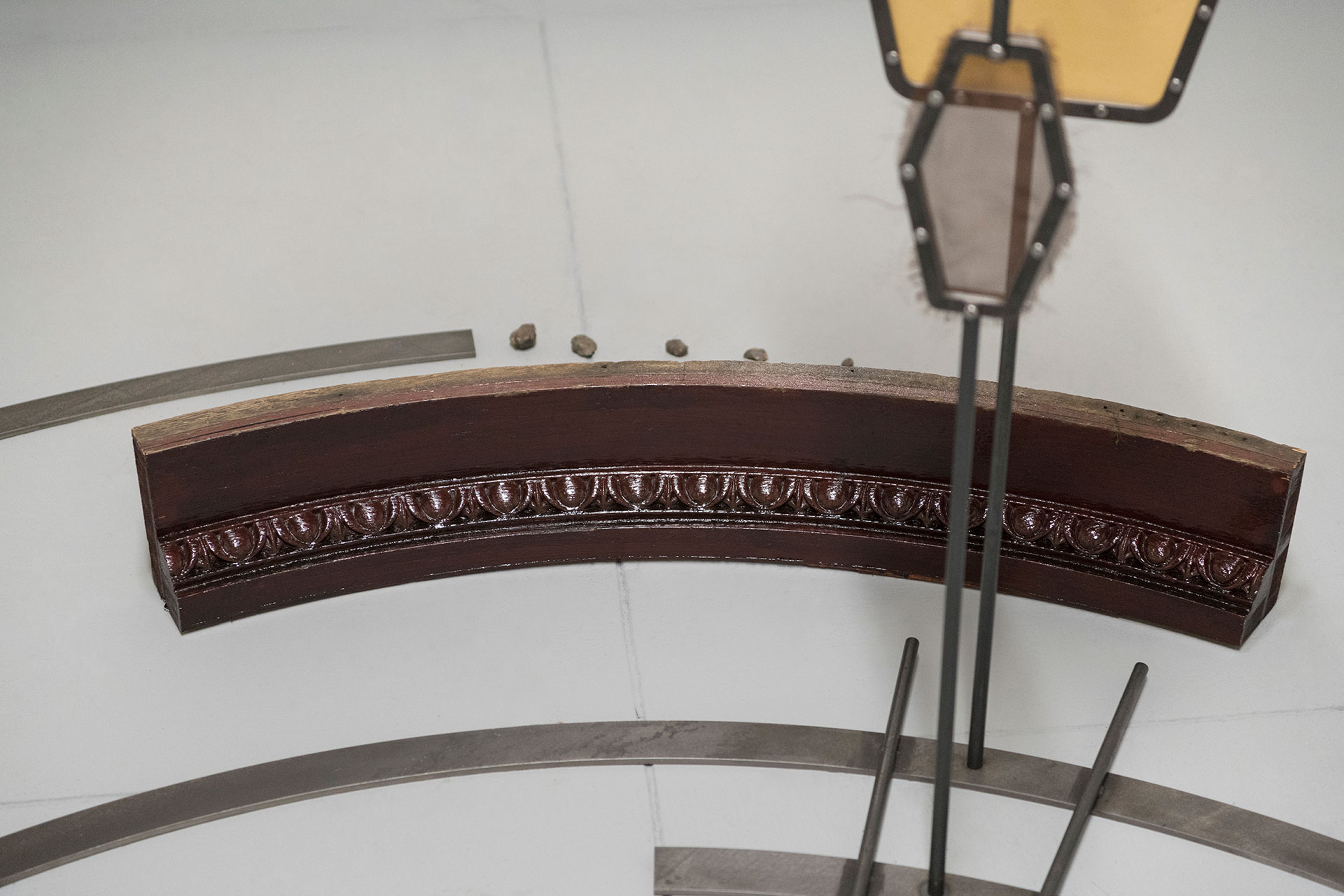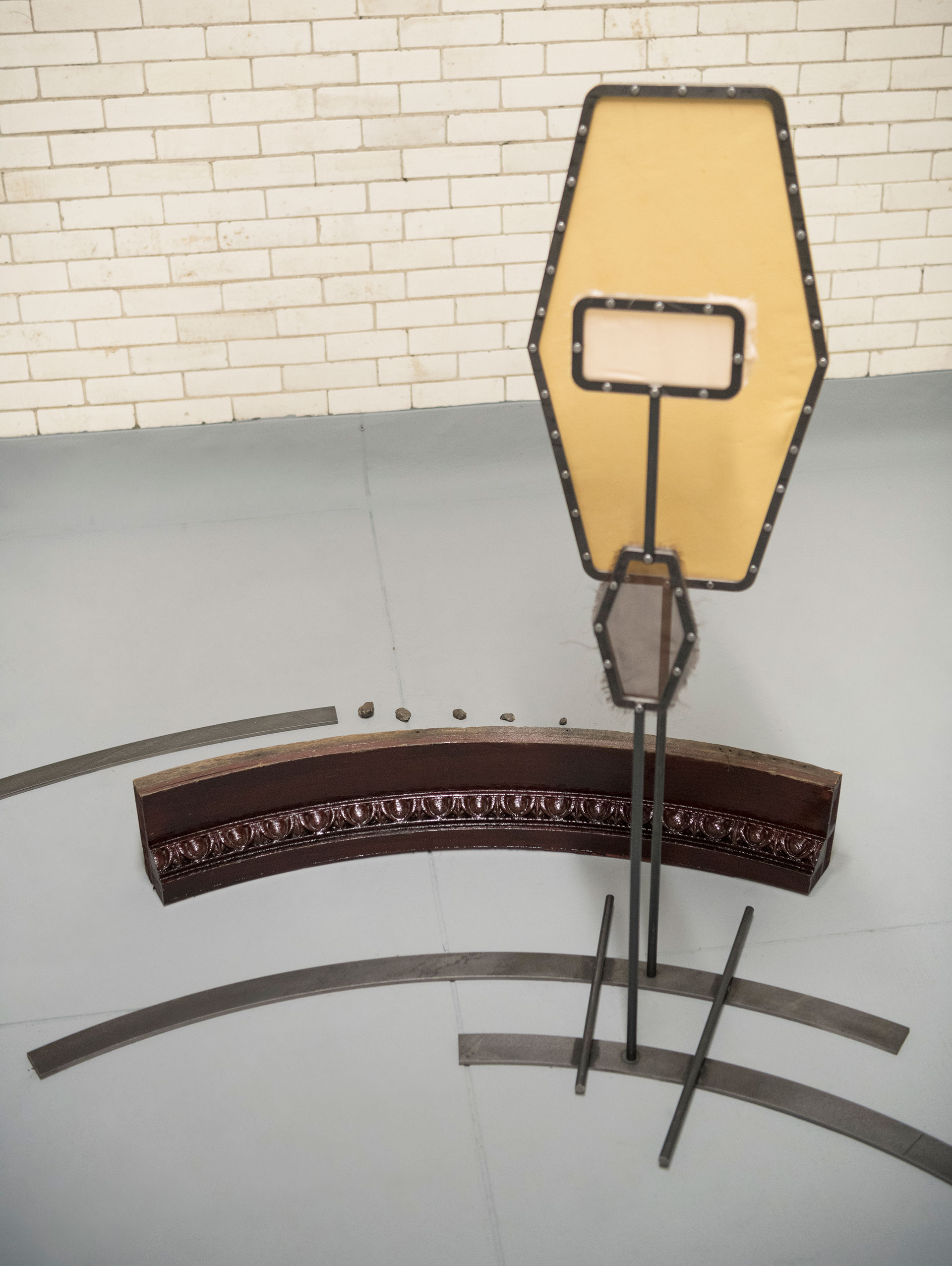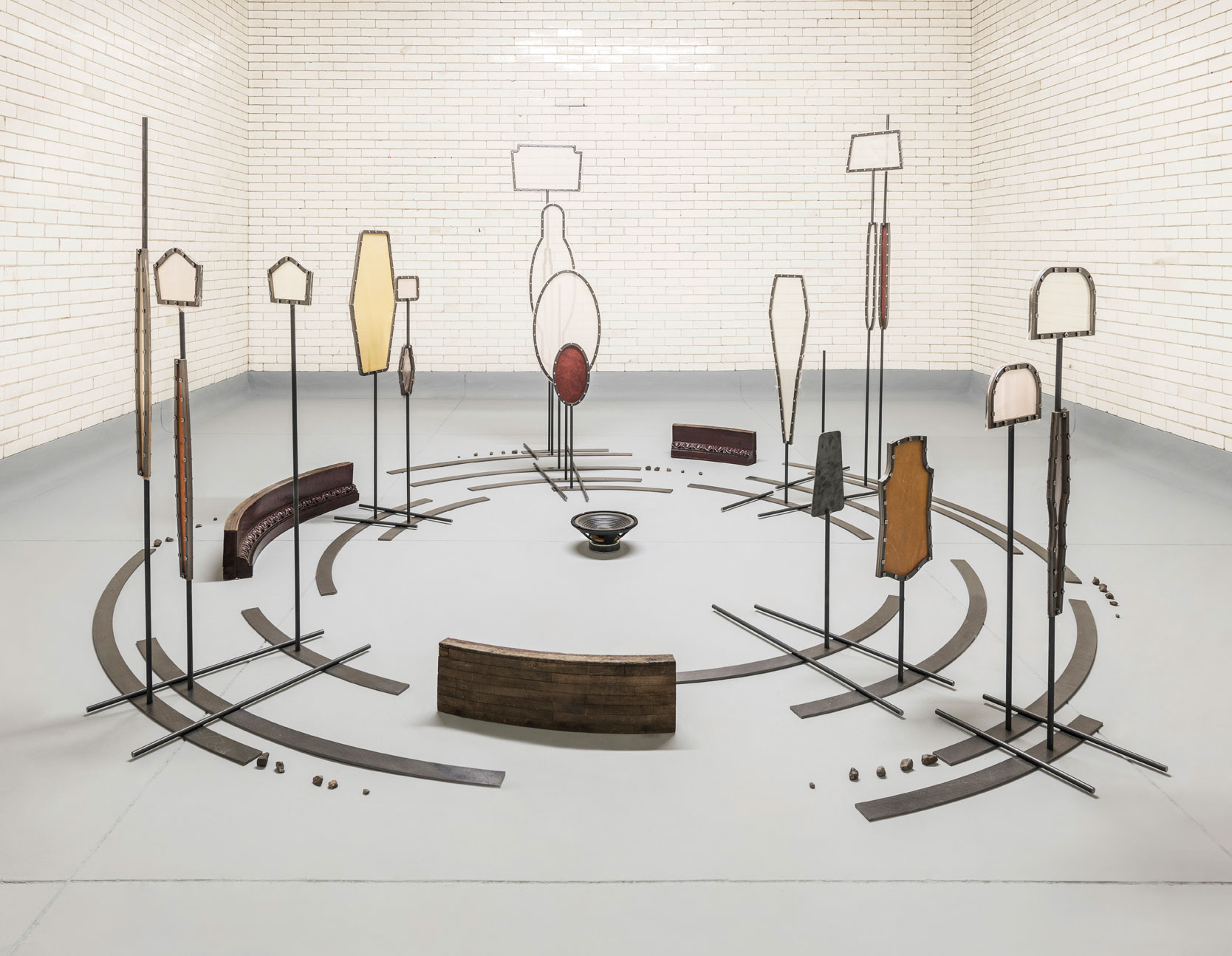Cosmic Relations
Astrological Humanism
By: Richard Vine, Maning editor of Art in America
Mille Kalsmose's new work, Cosmic Relations, carries her signature themes—personal identity and the connections between the self and others, especially family members—to a higher, more abstract level. Previously, the artist kept her explorations grounded, so to speak, despite a high degree of stylization. In Mnemonic Archives, brass shelving units recall the rigidity of social norms and official record-keeping, while stained and folded sheaths of rice paper betoken the pliant, imperfect individuals subsumed by custom and law. Other works, like Ancestors and Tribes, deploy flat, featureless, vaguely humanoid forms, their skin-like fabric (silk or pig's hide) stretched drumhead tight and bolted to steel stands—a commentary on the paradoxical ways that family roles confine, erase, and yet lastingly sustain us.
Perhaps the artist was seeking, consciously or unconsciously, an ideal metaphor to express the dynamic standoff between impersonal law—whether of society or physics—and unruly, idiosyncratic, psychologically fraught human nature. If so, she may well have found it in Cosmic Relations. Here, her anthropomorphic forms—flat as shadows, translucent as ghosts—are arrayed concentrically above curved metal floor elements that echo the trajectory of planets, the rings of Saturn, and the nested heavenly orbits that once, in ancient and medieval cosmology, were thought to produce the imperceptible but all-pervasive Music of the Spheres.
That Pythagorean notion of a universe built on harmonious proportions is literalized at the center of Kalsmose's piece by a small speaker emitting sounds (actually radio and plasma waves translated to sound) recorded by NASA's Cassini spacecraft in the vicinity of Saturn between 2002 and 2017. Reinforcing this cosmic link are meteoric pebbles that extend some of the metal curves like ellipsis dots, implying infinity. These material components may be rough, incomplete, and brutish, but the form they evoke—the circle—is a timeless emblem of perfection.
So, too, the flat quasi-figures. The cosmic musica universalis was long believed to correspond to an inner musica humana, a music of the human body (even today we speak of "well-toned" flesh), synonymous with good health and sanity. The proportions of the body were, on an intimate scale, analogous to those of the planets and stars. Thus in Kalsmore's work, humanoid forms loom up like guardian spirits, even amid the floor-bound symbols of galaxies.
"Man is the measure of all things," said Protagoras, a skeptic in regard to pure mathematics and disembodied laws of nature. By populating her highly schematic installation with human surrogates, and by arranging the work's elements in patterns reminiscent of Russian Constructivism (a movement at once rigorously abstract yet deeply tied to utopian dreams), Kalsmose reminds us that we ourselves are the observers, the extrapolators, the formulators, of the very systems to which we are subject.
